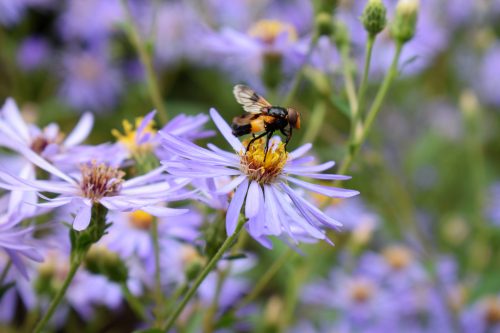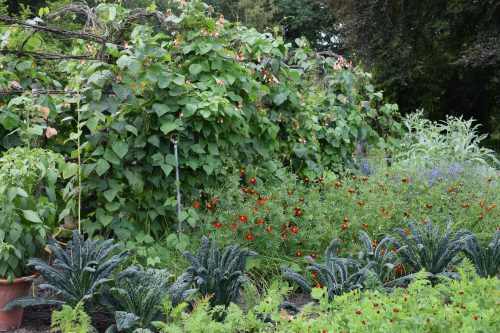Last Updated on December 27, 2020 by HodgePodgeDays
We know that kids who are physically active have better physical and mental health, they are happier and lighter. Kids who spend more time outdoors in the garden have better vision, have reduced ADHD symptoms, are less stressed, develop better social skills and don’t have vitamin D deficiencies.
Outdoor activities and exposure to plants and animals is also an opportunity for our children to discover things they are passionate about and good at. You might be raising the next David Attenborough but if you don’t give your child the opportunity to see and interact with the natural world all that potential will be wasted.

Some Alarming Stats;
- British children are among the least active in the world, and fitness levels are plummeting.
- ¾ of our children spend less time in the great outdoors than prisoners.
- 70% of mothers recall spending time outdoors every day as children, while only 31% of their children do.
As parents we all know there are lots of good reasons why our kids should be outside but we can’t seem to find the time to make sure it happens. Part of the reason is our own hectic lifestyles which leave little time to go outside. It is much easier for us to plonk our kids in front of the TV or a tablet while we use our tablets to get the shopping done, book a holiday and finish that report. We are also terrified for our kids and most of us won’t consider letting them out of our sight in public which reduces their opportunity for outdoor play and prevents them becoming more independent.
Garden Wildlife Sanctuary Project
A great idea to encourage your kids to get outside is to have a family garden project. A vegetable garden is a wonderful idea but it does take a lot of know-how from the parents and a regular time commitment. For most of us this is too big of an ask. A much easier project is to establish a wild garden. The set-up is easy and low cost and very little regular maintenance is needed. If the project captures your families’ imagination you can develop it as much as you like by adding hedgehog homes, bird boxes & feeders, butterfly gardens and ponds. All you really need to get started is a patch of garden, it only needs to be a few meters wide.
Start With Plants
The starting point for your wild garden project is to put in the right plants. If you are going to be encouraging local wildlife you need to make sure you plant species that are native to the UK and provide food in the form of seeds and nectar bearing flowers as well as thick plants for cover. Sound hard? Not at all just buy a seed mix or two from a specialist supplier online! Look for ‘environmental seeds’ or ‘stewardship seed mixes’. You will also find ‘bee friendly’ mixes which are high in nectar producing flowers. ‘Bird mixes’ or ‘cover crop’ seeds are likely to provide taller and thicker plants to provide somewhere for birds to hide. You can start your kids off on the project by asking them to look online for suitable mixes.
It’s probably a good idea to buy a couple of different mixes for good variety. You can share the seeds between several families because one tin of 250g for £20 can cover as much as 50m of garden. When you plant depends on the seed mix so just read the instructions carefully before you buy. It’s no good buying a seed mix that has to be planted in the spring if you want to get your project started in the Autumn. All you need to do is dig the patch of soil, pull out the weeds and then sprinkle on your seeds. Make sure you water them every three days if there is a dry spell. A better idea is to give the job to the kids who can take it in turns to do the watering.
At the back of your wild patch put in 1 or 2 shrubs/trees. They provide shelter and nesting sites. Choose something that produces berries, they look great and provide Winter food for birds – Rowan, Elderberry, Holly and Crab Apple are all good choices.

Other things to include
Litter – I don’t mean crisp packets – we are talking twigs and dead leaves. Decomposing vegetation is vital for lots of insects who provide food for larger animals like hedgehogs. Just collect up this garden rubbish from the rest of your plot and sprinkle it on your wild garden. Don’t do this if you have just planted seeds as the litter will block the sunlight from reaching the seeds and they will not germinate.
Water – fresh clean water is important. You can simply sink a plant pot or plastic bottle (with the top cut off) into the ground. The kids can take it in turns to top up or replace the water.
Maintenance
Very little! If your plants are a bit thin sprinkle some more seeds down in the spring or Autumn. Usually these wild mixes self-seed so you could find this is not necessary every year. In early spring you might need to trim away the dead dry grass from the previous year to allow the sunlight to reach the soil.
Development
Once your seed mixes are working well you can think about adding a couple of specific plants. Snowdrops and daffodils don’t do much for wildlife but they are some of the first plants and flowers to appear in the Spring so they can be important for keeping the kids interest high. They also grow from bulbs which fascinate kids.
Sunflowers are fantastic for birds, butterflies and bees and you can have a who can grow the tallest competition. Pumpkins or other squash are also easy to grow and great fun. For both sunflowers and squash start the seeds off indoors in a windowsill and then plant them out when they are a about 20 cm tall. You can label them so every family member knows who’s is who’s!
Once the plants are in place you can think about adding some specific homes for birds and animals. You can buy bird nesting boxes and feeders, homes for bees and hedgehogs online. If you are all loving your garden you can consider a bigger addition like a pond.
Education
The wild garden offers a fantastic opportunity for you to educate your kids about plants and animals. You can also give them some fun projects and treasure hunts which will keep them occupied while you do other things. There are loads of treasure hunt style lists online and wildlife spotter lists. These work well in your wild garden but you can also use them to make walks and day trips more interesting. The Woodland Trust has a nice set too.
Of course, you can just come up with a DIY activity for kids if you need to get them out from under your feet. Just ask them the following. They can take pictures of what they find on their phones and then use the computer to identify them.
- How many plants can you identify
- How many different yellow flowers are there
- Find 5 different grass seeds
- Look for 6 different sorts of insects
- Find 10 different types of leaves
- Identify 5 different birds

